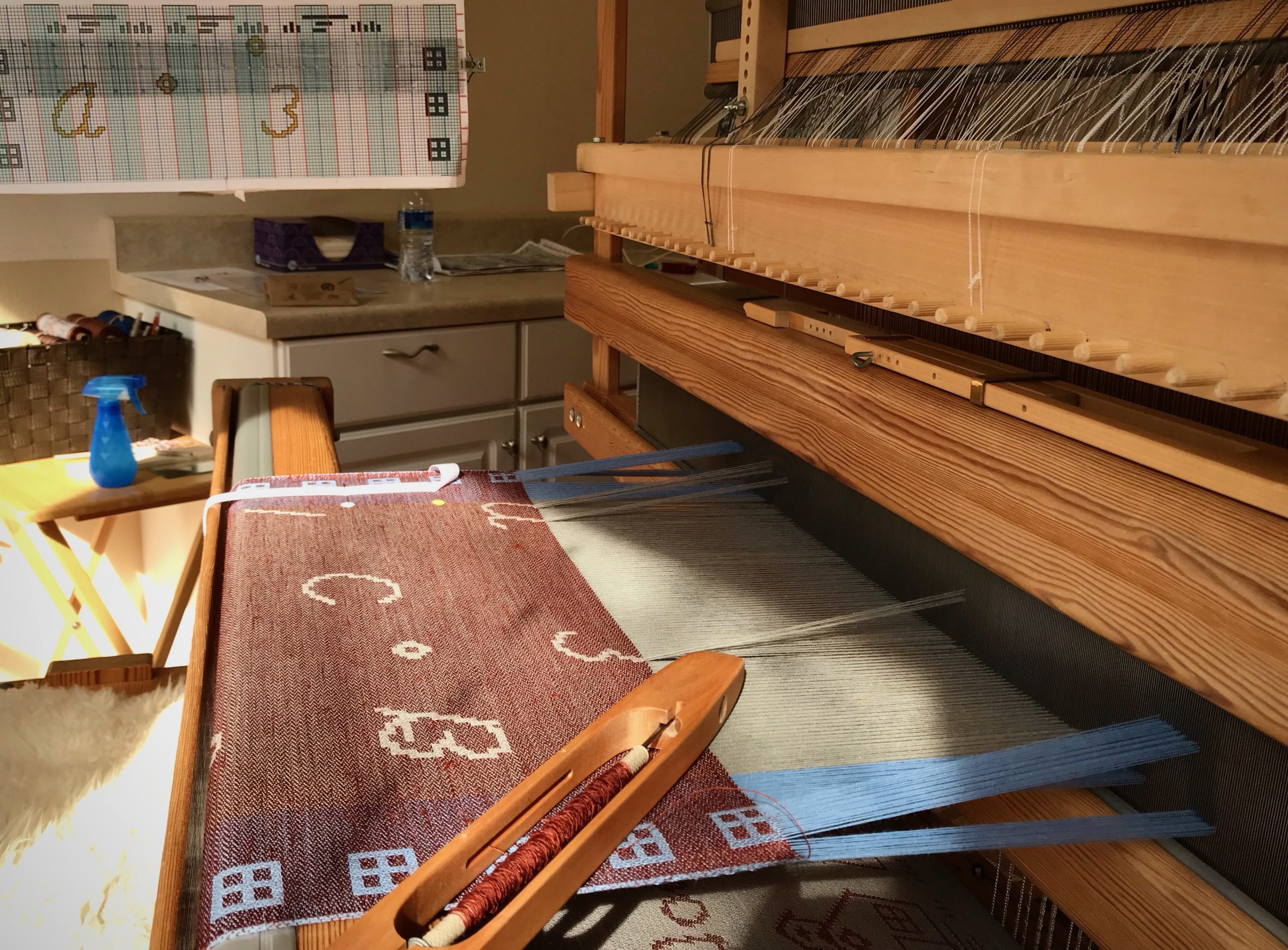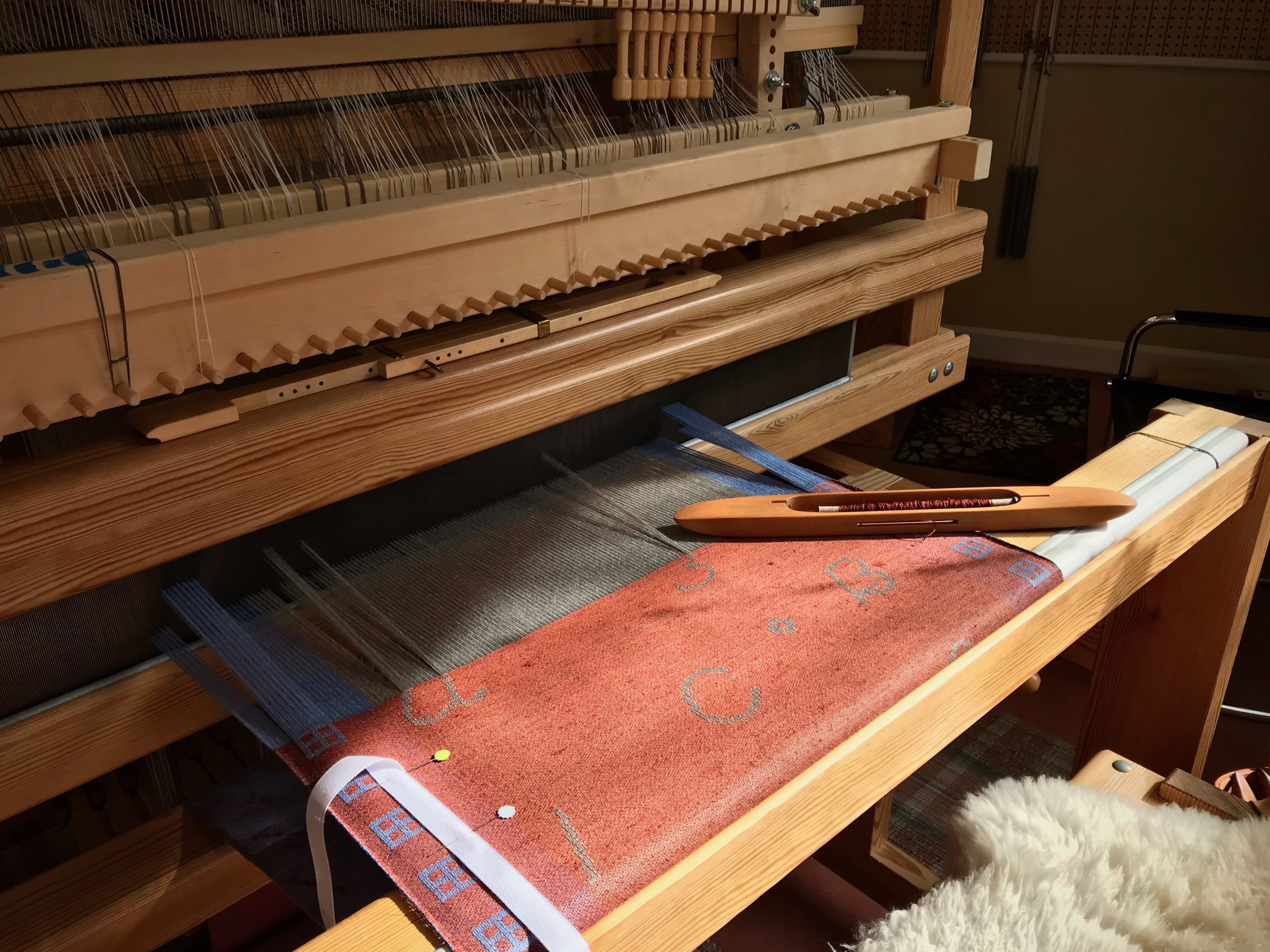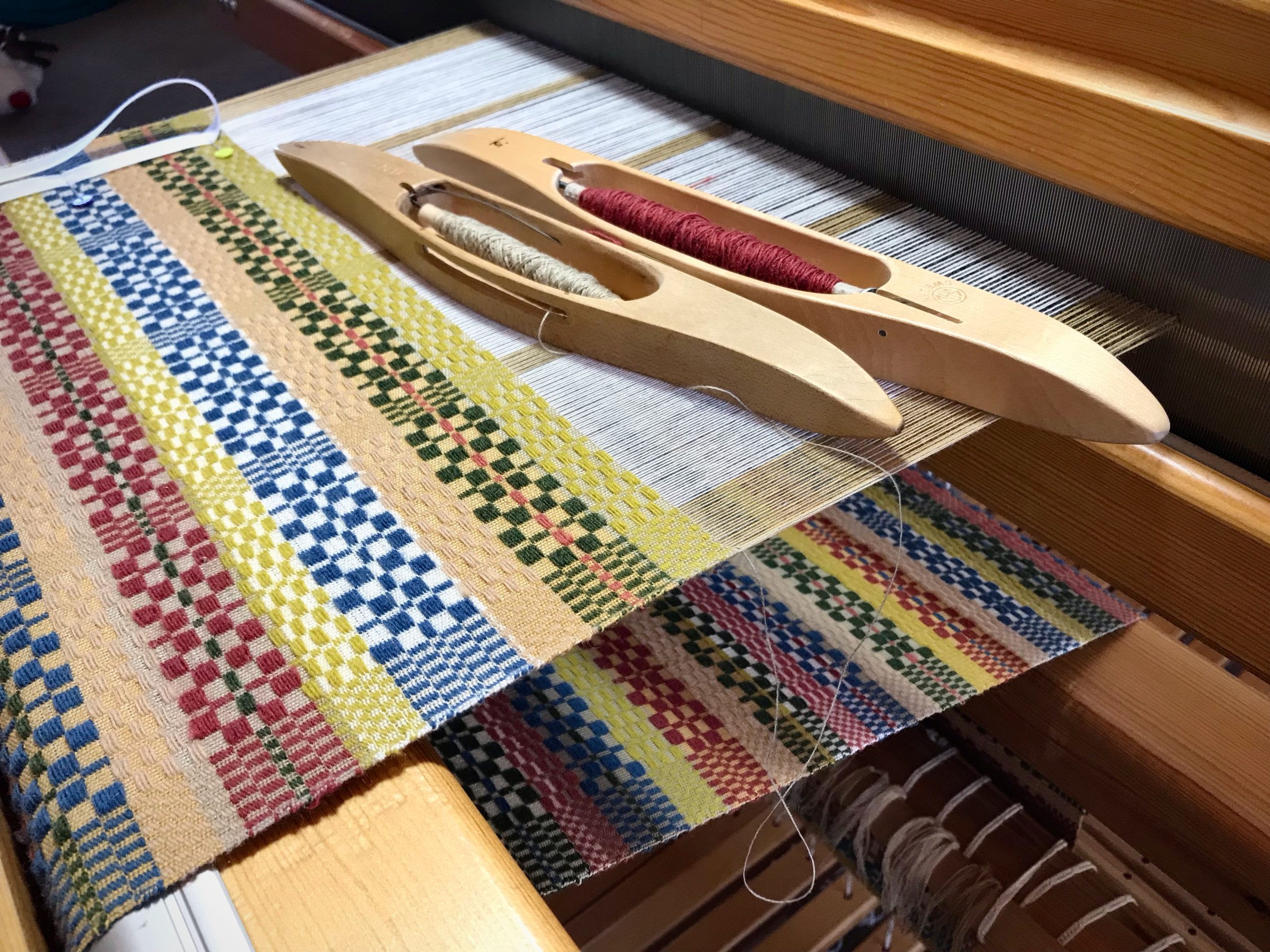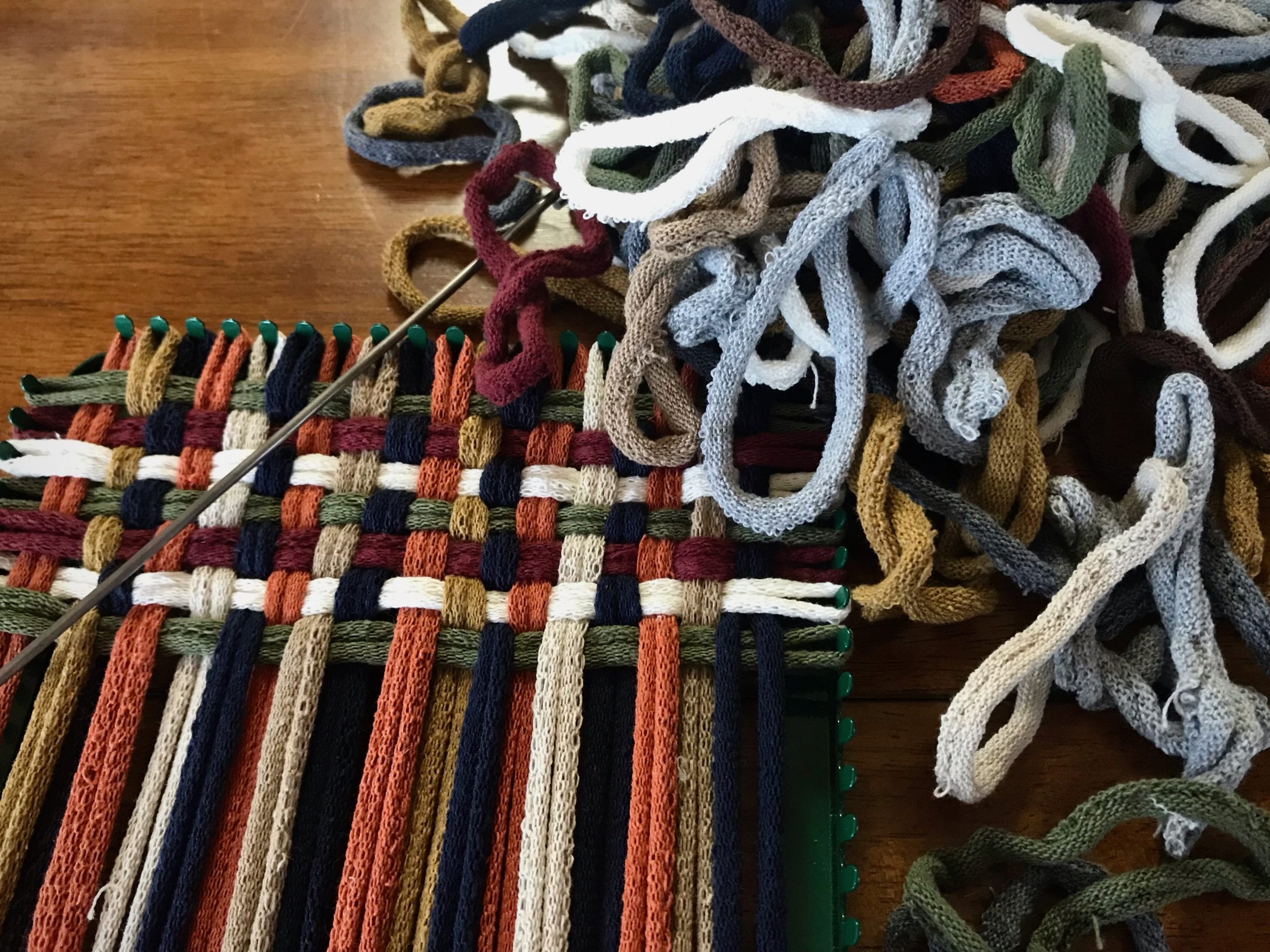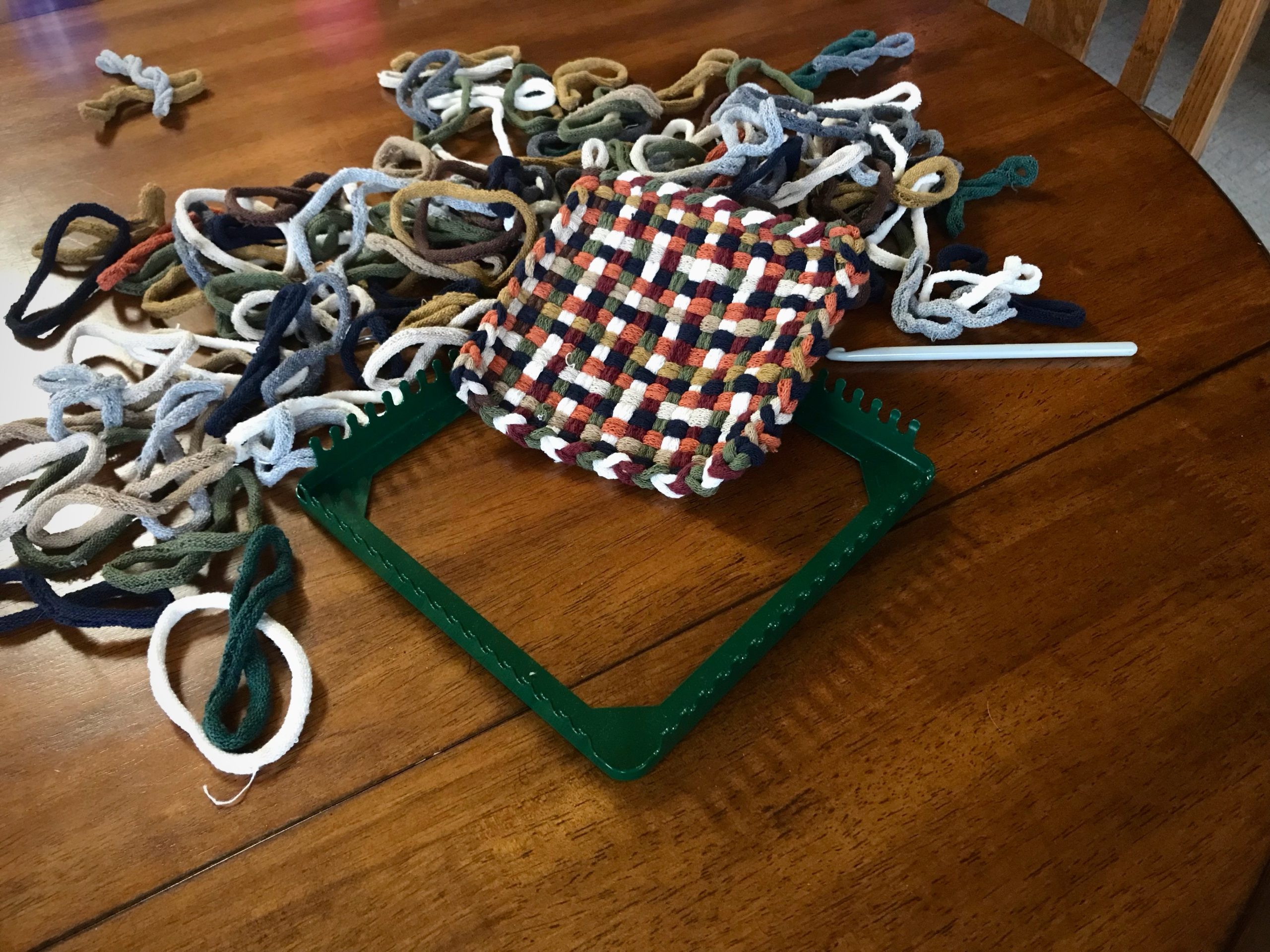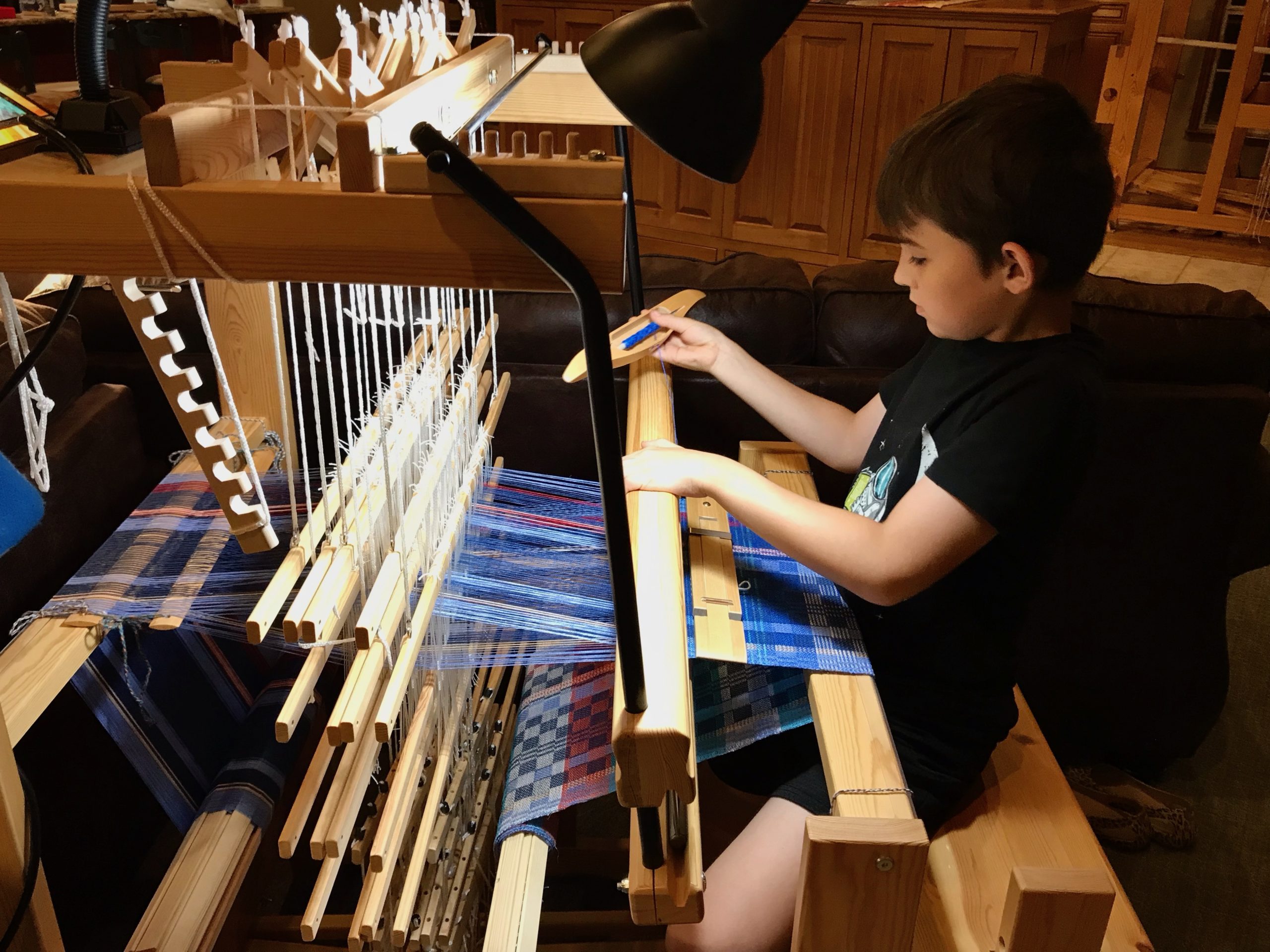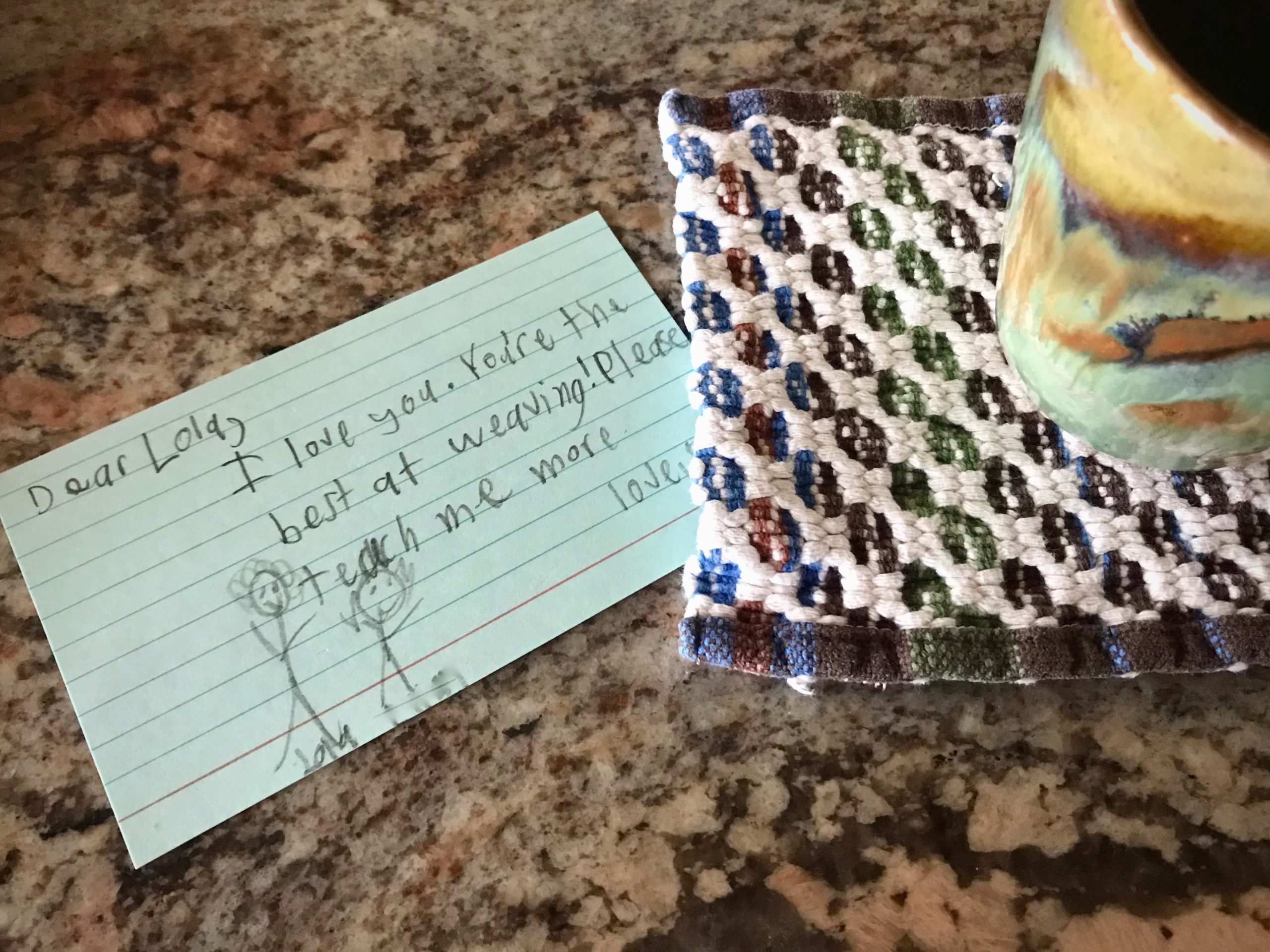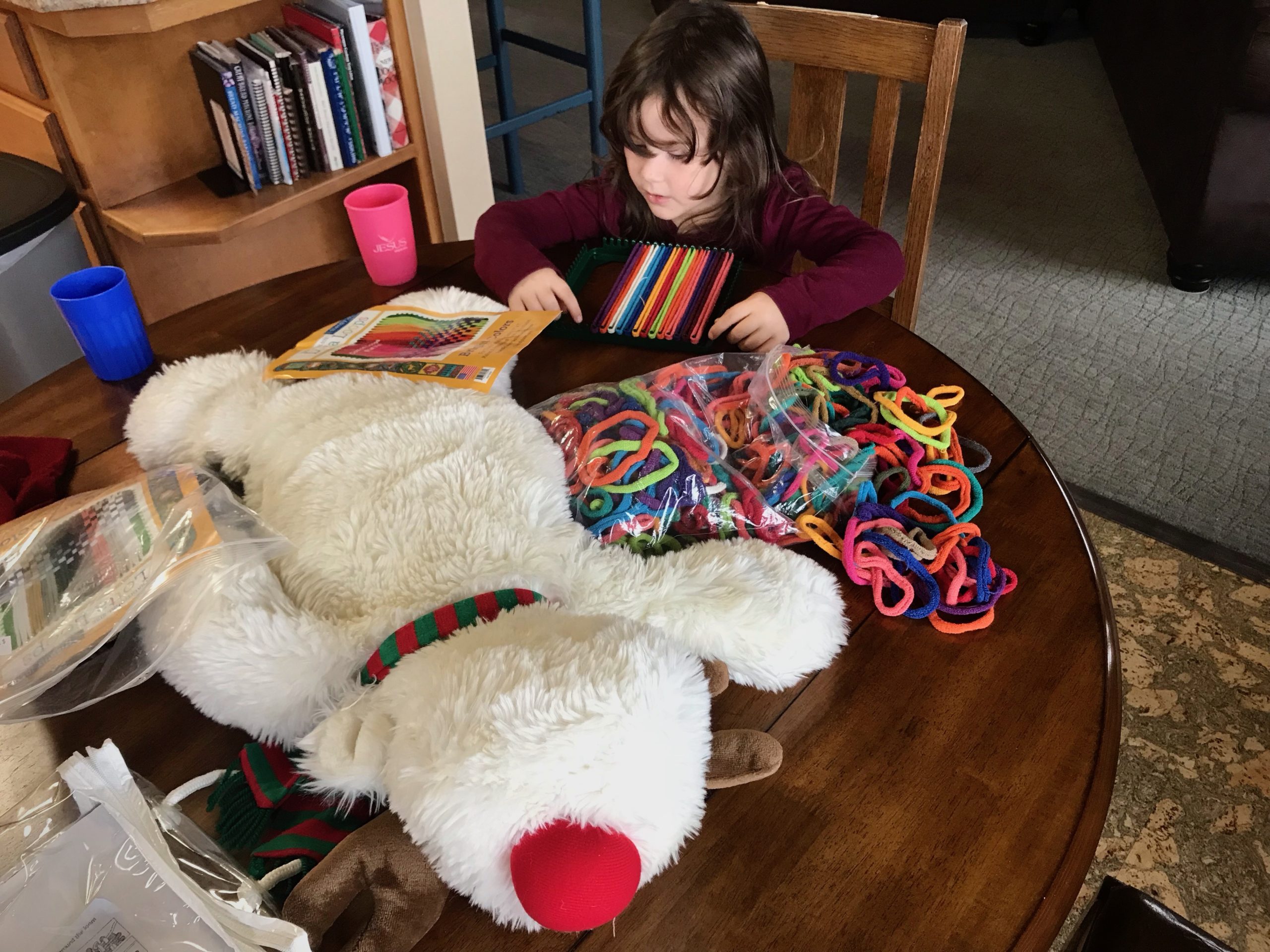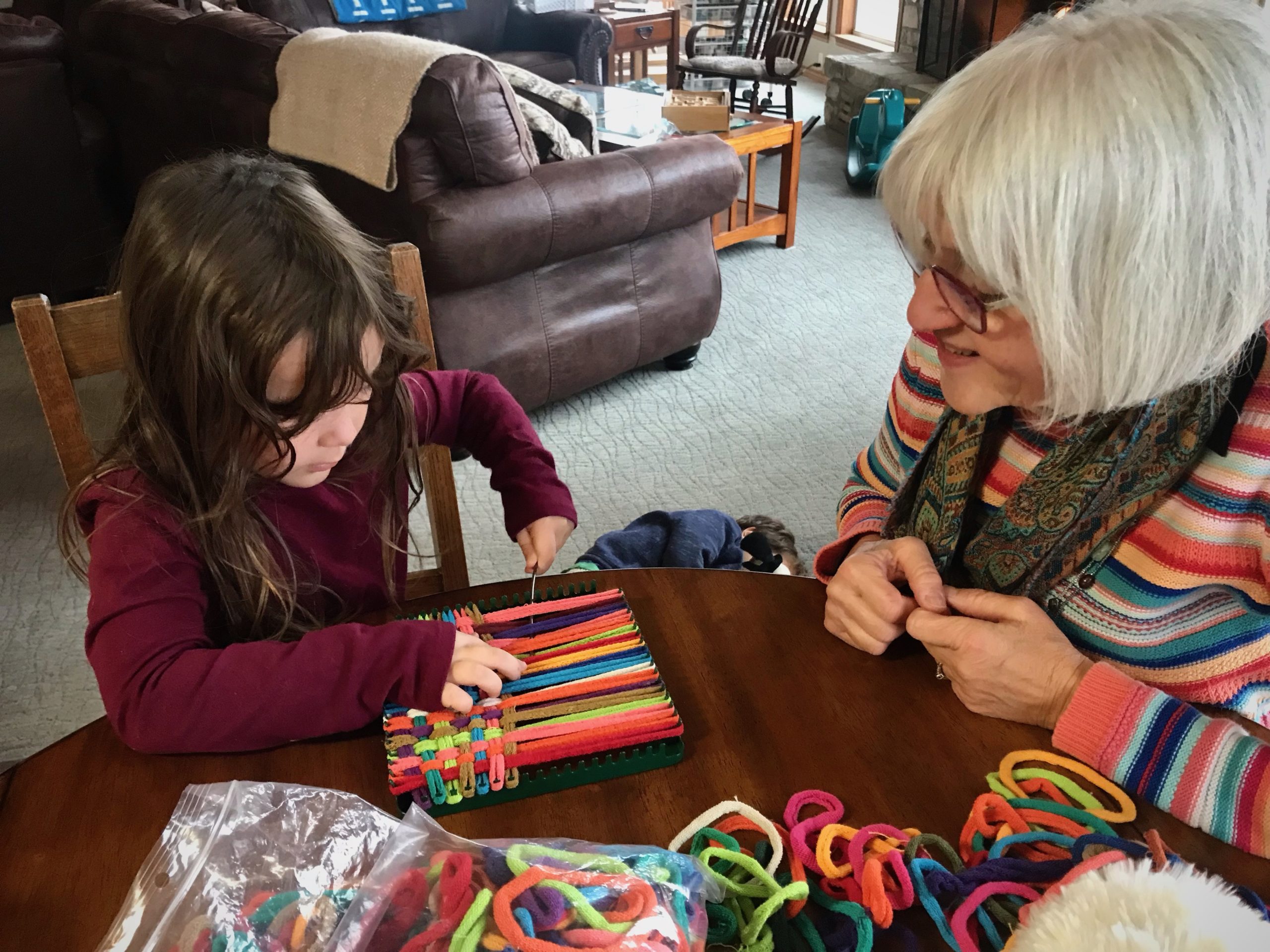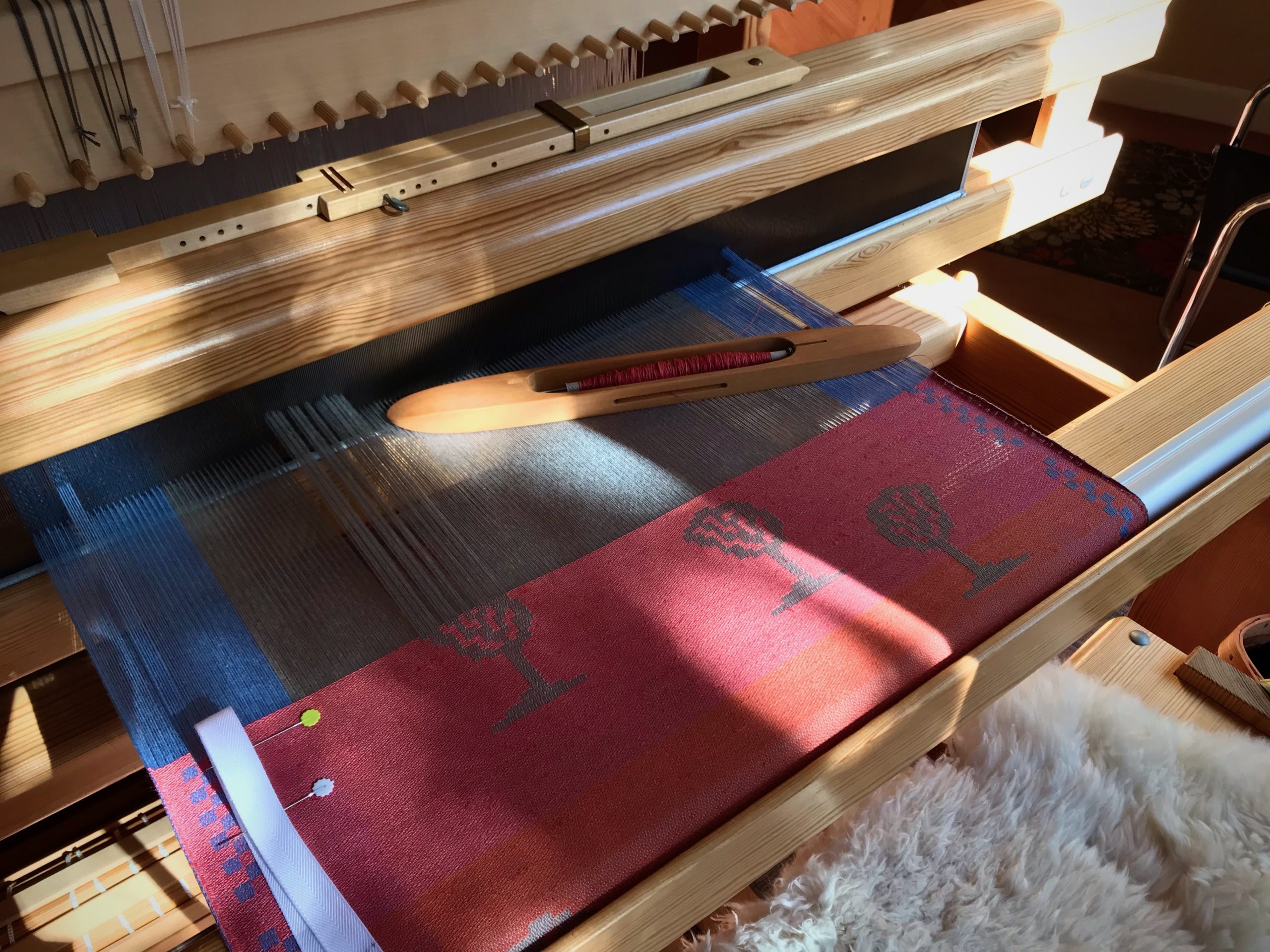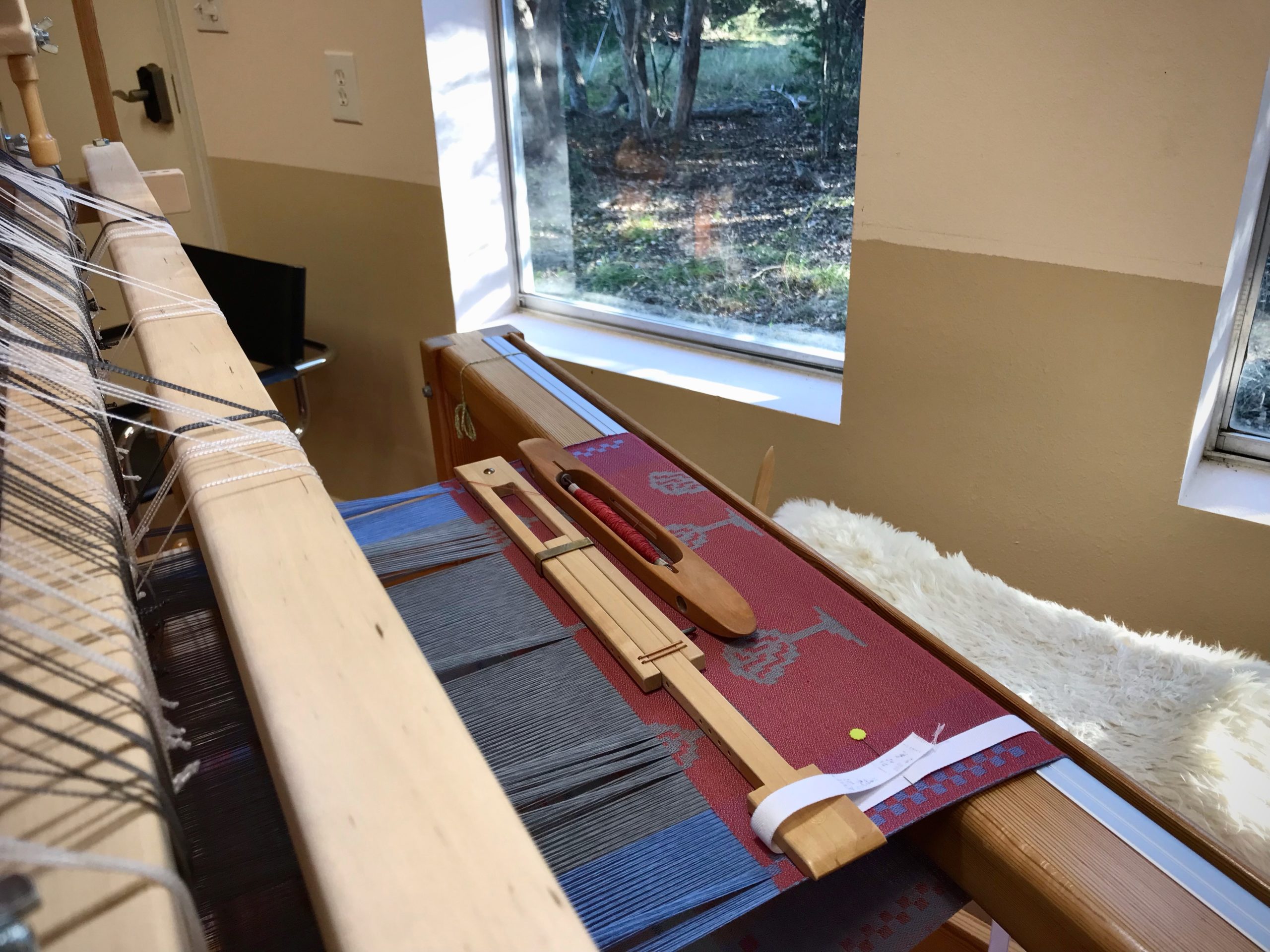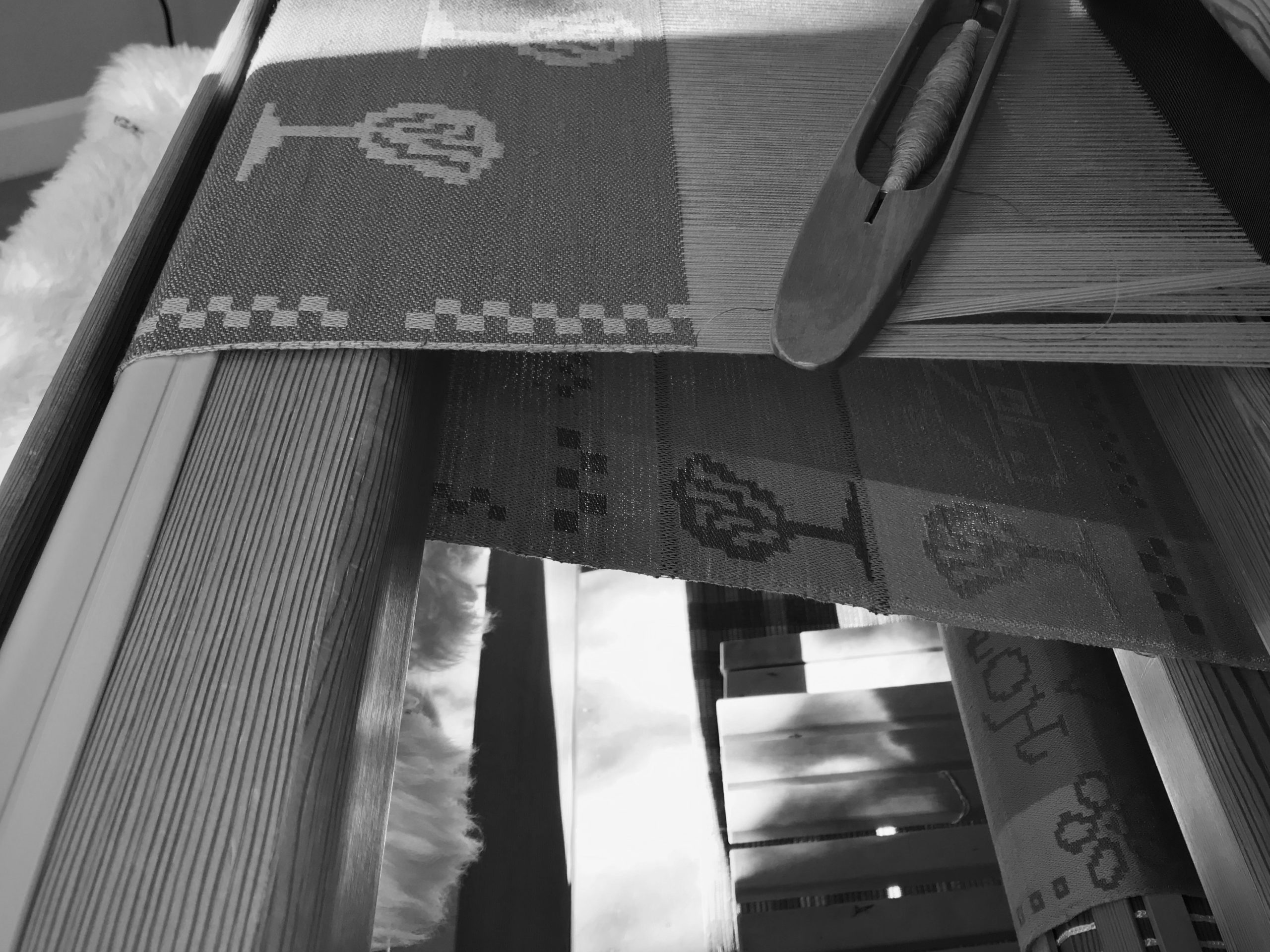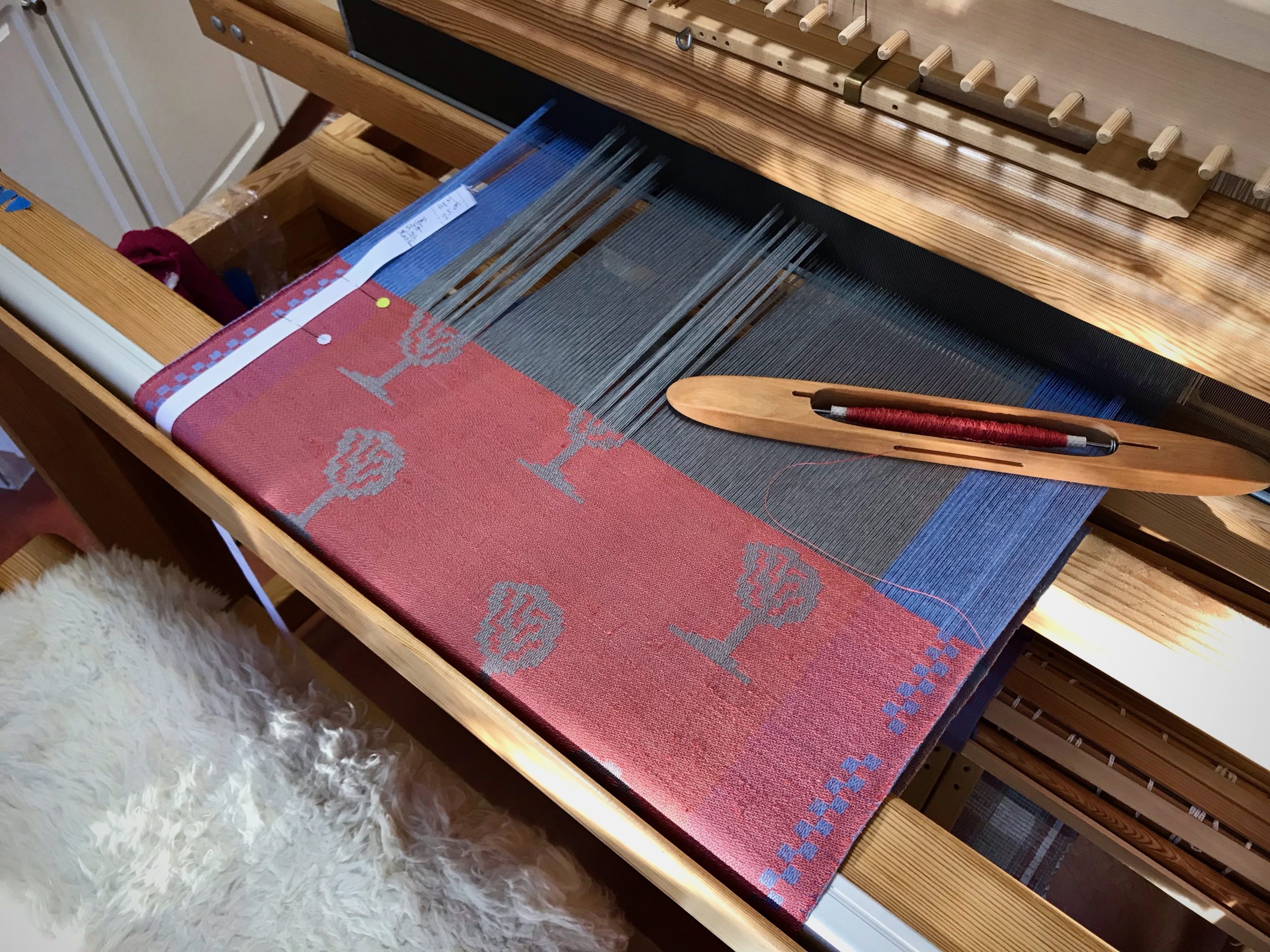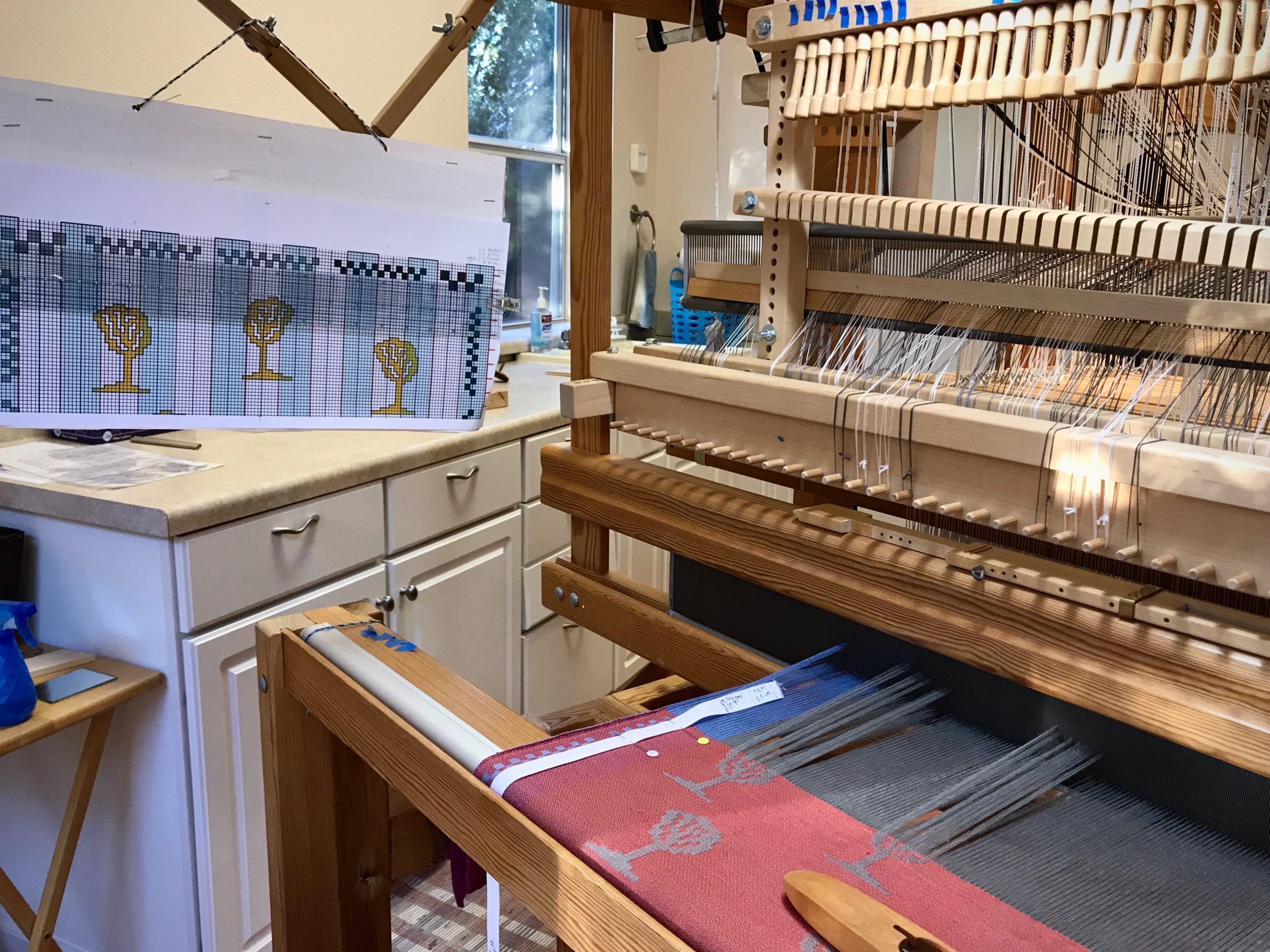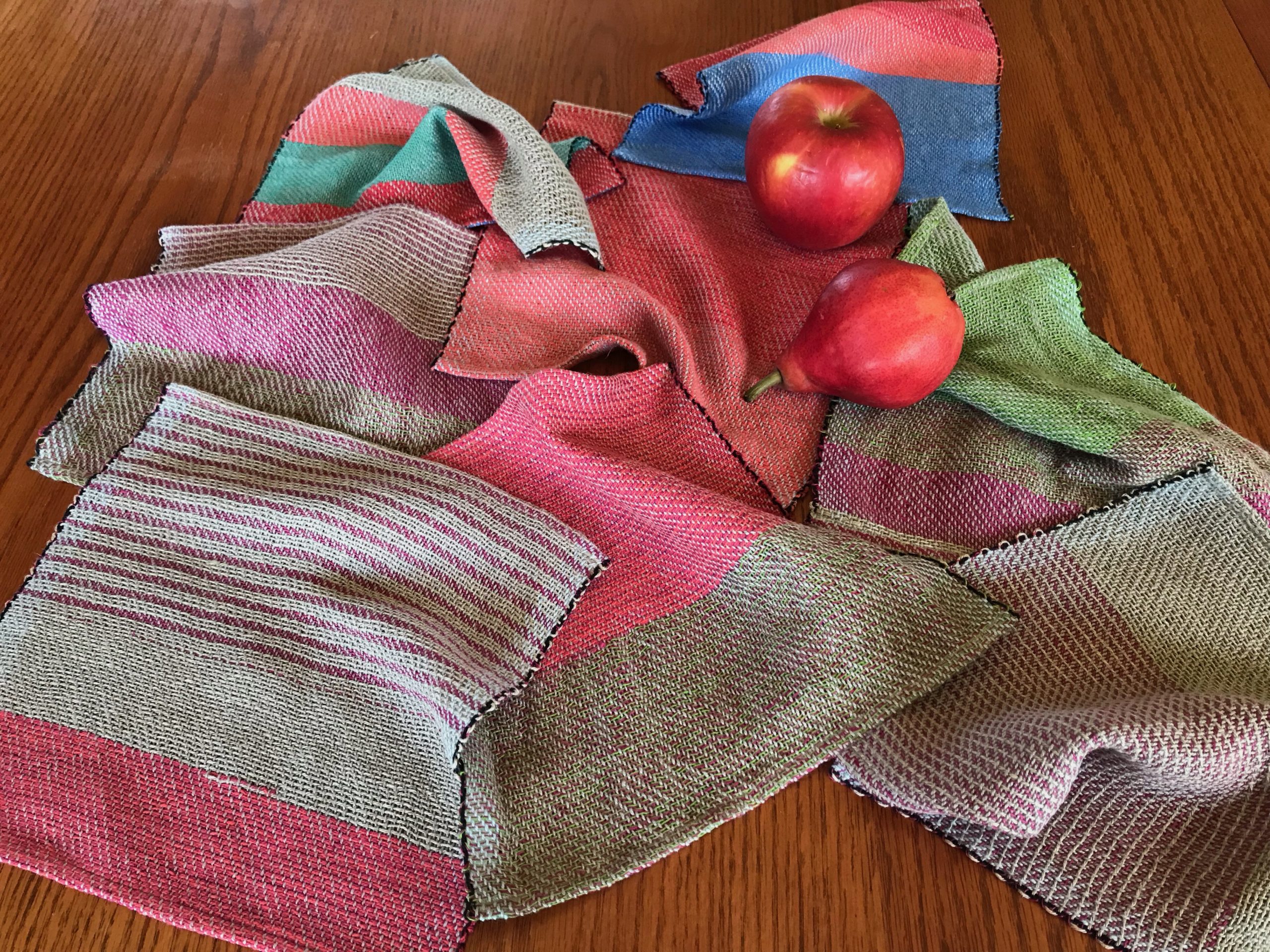I am finishing up a few meaningful (surprise) gifts for certain dearly-loved individuals. Christmas presents. Shhhh… The drawloom part represents untold hours at the loom. The band-loom part is the blink of an eye in comparison.


For the band, I am using the same blue and gray 16/2 cotton that is in the drawloom warp. I quickly wind a very narrow warp the shortest distance possible on my warping reel—116 centimeters. It’s a snap to beam it on the band loom, thread it, and start weaving. In no time at all, while listening to Christmas carols, I’m at the end of the warp, and cutting off the new woven band. Wouldn’t it be sweet to tie up every gift with a handwoven band? This band, however, will be inside the wrapping, as an embellishment on the gifts.





Melodies are an embellishment of the heart. They can arise in a few moments, yet they are connected to heart-filled sentiments that have taken years to develop. In this Christmas season, songs that are prayers become gifts for the newborn King Jesus. Prayers as songs and songs as prayers open our hearts to worship (adore) the Lord. “O Come, let us adore Him, Christ the Lord.”
A melody-filled Christmas to you,
Karen

